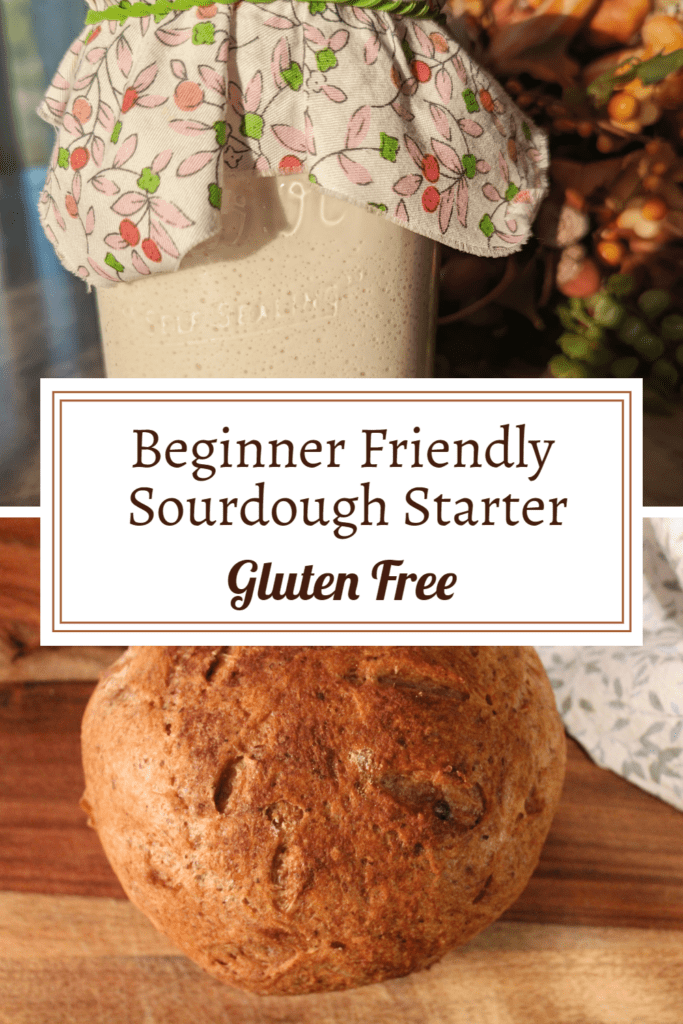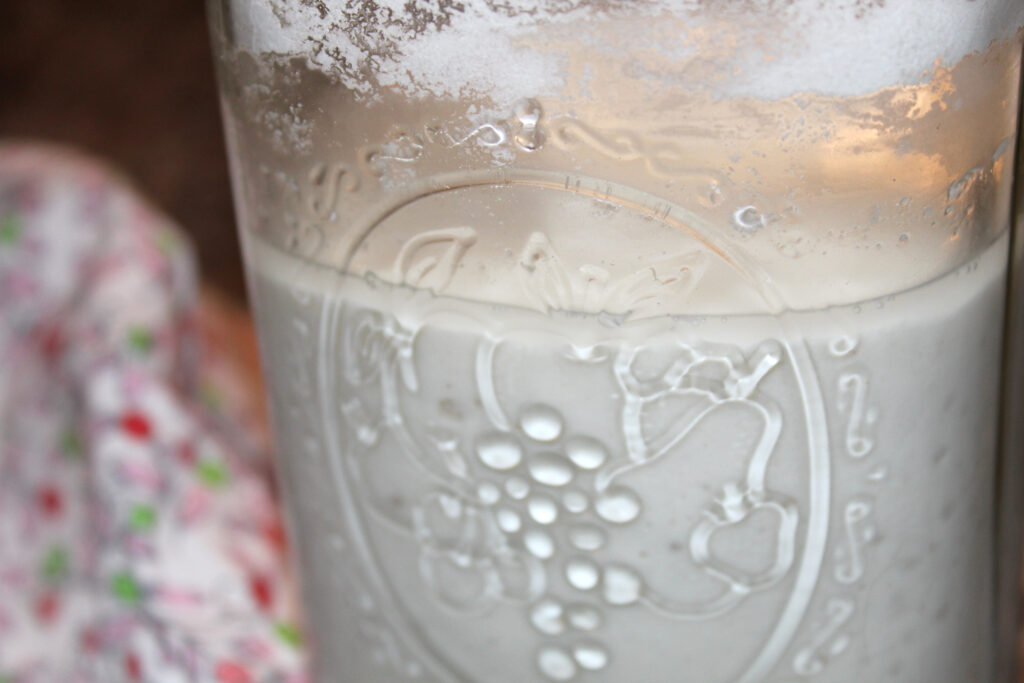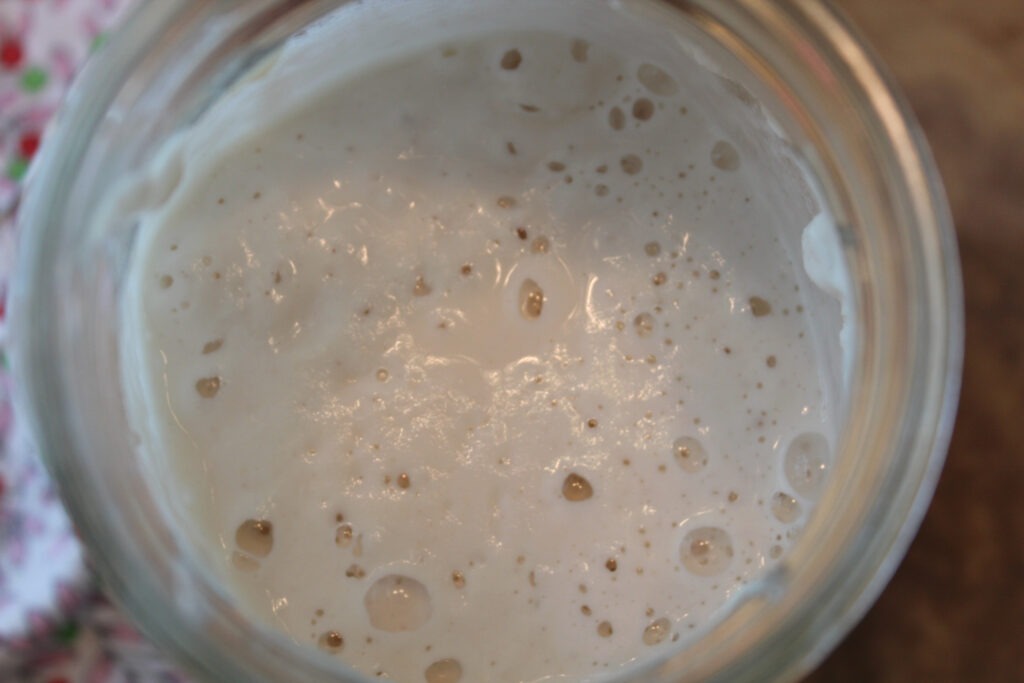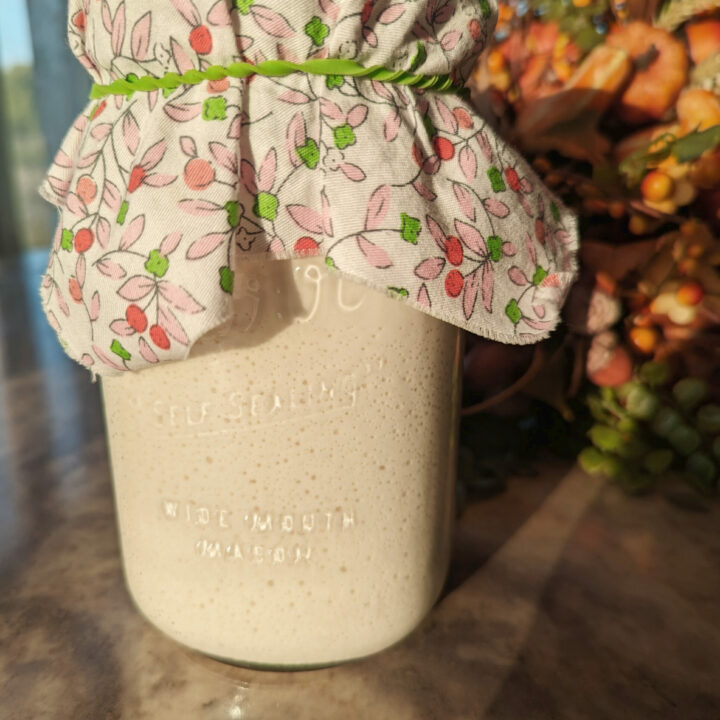Learn how to make the best gluten-free sourdough starter for beginners with just two ingredients—rice flour and water!

Who doesn’t love sourdough? I know it has always been one of my favorite kinds of bread. Whether as a bread bowl full of clam chowder in the fall, dunked into a steamy chicken noodle soup while sick, or just as a slice of toast in the morning before work, a good sourdough always hits the spot. Unfortunately, the most common kind of flour is wheat flour. I was diagnosed with a wheat allergy in high school, and until recently, I thought I would never eat sourdough again!
While gluten- and wheat-free options have become much more popular over the years, I have had trouble finding brands that make gluten-free bread—sourdough or otherwise—that aren’t filled to the brim with sugar or susceptible to going bad in less than a week. After years of trying to find gluten-free sourdough, I finally decided to learn how to create my own gluten-free sourdough starter! Our sourdough recipe has become one of my favorite things to bake, and my husband and I always have enough of the ingredients on hand to make a loaf the second we run out. Because we love our sourdough recipe so much, we want to share with you today the recipe for the piece that gives sourdough its sour nature, the starter.
What is sourdough starter?
Not a lot of people realize this, but sourdough starter is alive! It’s a flora- and fauna-rich microbiome that is created through the fermentation of flour in water in a room temperature environment. You should always go the whole grain route when making a starter because whole-grain flours are more likely to host the healthy bacteria that help cultivate the starter. As these healthy bacteria eat the flour, they create the tang that sourdough is so well known for.
What should sourdough starter look and smell like?
Gluten-free sourdough starter should be a bubbly mixture with the consistency of pancake batter. It will have a tangy smell that varies in strength based on how established your starter is and how strong you’ve made it. If your starter is yellow/orange on top, I’d recommend either discarding the mixture entirely and starting over or scraping off the discolored layers, putting the rest in a new jar, and continuing as normal.

Every now and then, there will be liquid on the surface of the mixture. This is called hooch. It is perfectly normal! You can either stir it back in (this is how you make an extremely tangy sourdough) or dump it into the sink (which is what I prefer to do).
When you feed an established gluten-free sourdough starter, it will double in size within a couple of hours and then slowly deflate. Once it starts deflating, that means it’s time to be fed.
How to feed and maintain a gluten-free sourdough starter
Feeding and maintaining a sourdough starter is surprisingly simple. All you have to do is discard a couple spoonfuls of the starter, then add in a couple spoonfuls of flour and an equal amount of water. You can do this once or twice a day, depending on how fast your starter eats through the flour (how quickly it starts deflating). During colder days, the starter will grow more slowly, meaning you won’t have to feed it as much. On warmer days, you’ll most likely have to feed it twice a day.
If this process takes too much of your flour, or you aren’t consistently baking with it throughout the week, you can store your starter in the fridge. This will slow the microorganisms down to almost a standstill, allowing you some breathing room before you need to feed or use the sourdough starter. After about five days, you’ll want to feed it and allow it to warm to room temperature. Feel free to put the starter back in the fridge once it reaches room temperature doubles in size again.
What can I do with sourdough discard?
If you’re like me and don’t like wasting things, you may have a hard time just throwing away your discard. Don’t fret! The discard is just as good as the sourdough starter you are actively feeding. You can put your discard into another glass jar and store it in the fridge. I like to add a bit of water and stir it to prevent the discard from becoming rock hard in the fridge. There are tons of sourdough discard recipes online. You can find everything from discard crackers to pizza dough!
What to do with sourdough starter when on vacation?
Of all the things that need to be taken care of everyday, let alone right before a big trip, we’d hate to see anyone cancel their travel plans just to take care of sourdough starter. If you know you won’t be able to care for your starter for more than five days, you’ll want to store it by either dehydrating or freezing it. Both methods put the microorganisms into hibernation and prevent your starter from going bad.
All you need to freeze your starter is one cup of your active starter and a plastic bag or other freezer safe container. Once your ready to use your starter again, take it out and bring it back to room temperature. Discard half, and feed your starter as normal. It will take two to three days for your starter to wake up. Once your starter is growing normally again, you can start baking with it again.
To dehydrate sourdough starter, spread a thin layer onto a baking sheet lined with parchment paper. Let the starter air-dry for a couple of days until completely dry. You can throw it into a food processor to powder it or just leave it in it’s flaky form. Store in an airtight container in a dark, cool place. To rehydrate, add water and flour and feed as normal. Like freezing, dehydrated sourdough starter will take a couple of days to get back to normal before you can start baking with it again.
How to make a gluten-free sourdough starter

Making a sourdough starter may sound intimidating, but it couldn’t be easier! Before you can even start making the dough, you will need an active starter. You can buy one online, but I have had the best luck by just using a gluten-free flour and water. For gluten-free flour, you generally do not want to use a mix, especially if it has gums, stabilizers, or other additives. I have found the most success using rice flour, but any whole-grain gluten free flour will work. You can also mix and match flours to find your favorite blend!
This recipe will also work if you want to use wheat flour instead, but keep in mind that gluten-free flours behave a bit differently than non-gluten-free flours and will require different amounts of water depending on the specific type you go with.
Steps:
Day 1 – 7
1/2 cup rice flour
1/2 cup filtered water at room temperature
After Day 7 – your starter will have started bubbling around this time. This means it’s ready to bake with!
1/4 cup rice flour
1/4 cup filtered water at room temperature
Types of gluten-free sourdough starters
You will get slightly different results with your starter based on the kind of flour you use. It can vary in density or tanginess. Along with this, the water-to-flour ratio you’ll need to get that pourable starter we know and love will change. Play around with different flours to see what fits your taste buds. You really can’t go wrong with any whole grain flour.
Rice Flour
Rice flour is what I use the most often because it is what I have had the best results with. I use white rice flour since that’s what is available in my area. You can also use brown rice. In my experience, rice flour behaves the most like a traditional wheat starter, though it won’t be nearly as bubbly.
Coconut Flour
If you choose coconut flour, you will need to double the amount of water our recipe suggests. Coconut flour is a very thirsty flour, but it also can become incredibly light and airy. Plus, it gives a subtle and delightful coconut flavor to your sourdough, making it perfect for sourdough desserts.
Oat Flour
Similarly to coconut flour, oat flour is thirsty, so you’ll need to add more water than the recipe requires. Oat flour doesn’t bubble nearly as much as the rice flour, so it will lend itself better to thicker sourdough baked goods.
Gluten-Free Sourdough Starter Recipe

Easy Gluten-Free Sourdough Starter Recipe
Learn how to make a super easy, gluten-free sourdough starter that only uses two ingredients! You'll be baking deliciously tangy sourdough loaves in no time.
Ingredients
- Rice Flour (white)
- Filtered water
- Glass jar
- Fabric scrap or cheese cloth
- Rubber band
- Nonmetal spoon and whisk
Instructions
- In a clean glass jar, combine 1/2 cup of gluten-free flour and 1/2 cup of filtered water at room temperature.
- Stir until well combined. The mixture should have a consistency similar to pancake batter.
- Cover the jar with a piece of fabric and secure with a rubber band.
- Place the jar in a warm, slightly dark location.
- Stir the starter twice a day.
- After 7 days, the starter should be bubbly and active. Only use 1/4 cup of flour and water after 7 days.
Notes
This is one of our more unique recipes. Instead of food items taking the forefront, most of the items in this recipe are the containers and covers that hold the starter and ensure that it has the best growing conditions. The starter can be finicky about what materials you use—metal especially. Use nonmetal utensils when working with the starter because it can corrode metal and trap that metallic taste. We suggest using a quart-sized jar because the starter will grow as you feed it. We also suggest using filtered water if possible because it will minimize the potential of bacteria growth.

Leave a Reply
You must be logged in to post a comment.